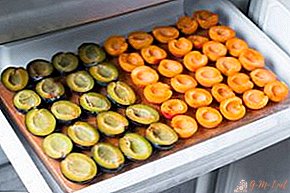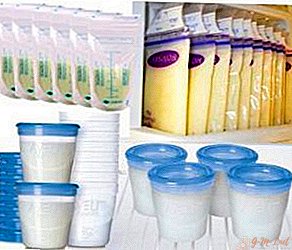In the season of vegetables, fruits, berries, the diet is replete with variety and vitamins. Experienced housewives know that to extend this period for the whole year is easy - by freezing. Almost all refrigerators are equipped with a freezer, but not all of them are used as practical as possible.What to freeze in the freezer for the winter? It can be fruits, vegetables and much more.
What vegetables can be frozen for the winter?
You can harvest almost anything for the winter (there are few exceptions, but they are). Many products are frozen individually, but it is convenient to pack them in bags and mixes, especially if you often cook certain dishes.
Important: for freezing, you need to choose fruits of good quality (it is better to leave ripe ones for other purposes), places with damage or rot are removed in advance.
 Of vegetables, eggplant, pumpkin, pepper, cauliflower and broccoli behave best in freezing. Some housewives also store tomatoes and cucumbers in the winter (the latter are suitable only in grated form for okroshka). Of the mixes, preparations for green and red borsch, paprikash, risotto, stew, lecho, paella are popular. Thawing vegetables is not necessary beforehand - you can immediately start cooking.
Of vegetables, eggplant, pumpkin, pepper, cauliflower and broccoli behave best in freezing. Some housewives also store tomatoes and cucumbers in the winter (the latter are suitable only in grated form for okroshka). Of the mixes, preparations for green and red borsch, paprikash, risotto, stew, lecho, paella are popular. Thawing vegetables is not necessary beforehand - you can immediately start cooking.
All vegetables are preferably harvested immediately in the form in which they will be used during cooking. Frozen fruits can only be rubbed, but an ordinary knife cannot be dealt with, so vegetables should be cut before freezing.
Help: to speed up the cooking process, you can store grated carrots and onions in the freezer, chopping off the necessary parts if necessary.
How to freeze fruits and berries for the winter?
Fruit freezing is much more preferable than preservation or alteration in jam, as this method allows you to save more vitamins and nutrients. You can harvest them either whole or in cut form.
An interesting option is the preparation of fruits and berries in the form of mashed potatoes, sorbet or ice cream. All this is subsequently consumed directly or added to smoothies, cocktails, compotes and even pastries.
- Of the berries, strawberries, currants, raspberries, sea buckthorn, gooseberries, lingonberries, strawberries and blueberries are often frozen in containers, simply pouring layers of sugar. In this case, it is not used for preservation, but in order to preserve the taste of berries in the best way.

- Berries with seeds should be frozen without taking them out, however, this is unacceptable with fruits: plums and apricots should be cut into halves or slices, getting rid of unnecessary parts.
- Of the other fruits, peaches, pears, sour apples, and citrus fruits are well tolerated in the freezer. Low temperatures also allow you to get rid of bitterness.
- Watermelon should not be frozen in pieces: it is better to grind it immediately in mashed potatoes. With strong cooling, its consistency changes, but there is no taste, so the finished puree can then be used in smoothies and sorbets.
- Tropical fruits are also harvested in the freezer. Only avocados should be stored separately, as it is rarely used in sweet dishes. The peel is removed from it, the bone is taken out, and the pulp is cut into cubes. The same approach applies to mango and papaya. Pineapple should be stored without a peel, cutting it into rings or cubes.
Important: all fruits and berries should be washed and dried before freezing, and the stalks, leaves and seeds should be removed if possible.
Harvesting and storage of mushrooms in the freezer
 Freezing mushrooms is the fastest way to process them. At the same time, they retain good taste and texture. But unfortunately, most mushrooms should be boiled before being sent to the freezer. This item can only be avoided with champignons, oyster mushrooms and porcini mushrooms.
Freezing mushrooms is the fastest way to process them. At the same time, they retain good taste and texture. But unfortunately, most mushrooms should be boiled before being sent to the freezer. This item can only be avoided with champignons, oyster mushrooms and porcini mushrooms.
Depending on the size, the mushrooms can be stored either whole or chopped. Champignons, due to their voluminous caps, are best chopped into slices.
Important: after defrosting, mushrooms should be used immediately. Do not subject them to secondary freezing.
Features of freezing greens
 It’s easy to freeze greens - many begin to master this business from it. You can harvest anything: dill, parsley, celery, cilantro, rosemary, salads, beet tops and even parsley stalks, which can then be used when cooking broths. The only thing that should not be sent to the freezer is a green onion, as low temperatures significantly reduce its sharpness.
It’s easy to freeze greens - many begin to master this business from it. You can harvest anything: dill, parsley, celery, cilantro, rosemary, salads, beet tops and even parsley stalks, which can then be used when cooking broths. The only thing that should not be sent to the freezer is a green onion, as low temperatures significantly reduce its sharpness.
The greens must be washed and dried thoroughly so as not to freeze a lump of water in the end. You can harvest as a whole, carefully dragging the bundles, and in a finely cut form.
Help: quickly cut a large amount of greens with ordinary scissors.
To simplify cooking, you can immediately freeze mixtures of herbs or in some basis, for example, in butter or olive oil. Such cubes immediately rush into the finished dish: under the influence of temperature, they will immediately melt.
Convenience Freezing
In addition to the usual meatballs and dumplings that almost everyone freezes, stuffed peppers and pancakes, pies, cabbage rolls and soup broths can also be subjected to this process. Possible options are limited only by imagination.
It is worth remembering that such products can be stored in the freezer for no more than two to three months. Subsequently, they lose their taste and benefit, and can also deteriorate due to the frequent temperature difference.
What can not be frozen?
No matter how much you want to freeze everything and everything, some vegetables are simply unsuitable for this. You should not harvest such watery fruits as cucumber, cabbage and zucchini, as over time they will completely lose their taste. Potatoes are also adversely affected by low temperatures - it acquires a rancid taste.
With watermelons, tomatoes and strawberries, you should carefully approach the freeze: they do not tolerate it well in all forms.
Packaging for freezing
The former are characterized by durability and strength, the latter by cheapness and compactness.
 There are two types of containers: permanent (made of thick plastic) and disposable (thin). If you have not yet decided how much food is convenient for you to freeze, then you should resort to disposable containers, as they are cheaper, and the next time you can choose a different size. Bags for freezing are recommended to choose dense and with a zipper, however, ordinary ones are suitable if you solder the open edge with an iron.
There are two types of containers: permanent (made of thick plastic) and disposable (thin). If you have not yet decided how much food is convenient for you to freeze, then you should resort to disposable containers, as they are cheaper, and the next time you can choose a different size. Bags for freezing are recommended to choose dense and with a zipper, however, ordinary ones are suitable if you solder the open edge with an iron.
When frozen, some foods may slightly change their taste. If you are unsure whether you like a vegetable or fruit in this form, then try for the first time to freeze everything in a small amount so as not to make a mistake with the choice.


Leave Your Comment